Tecnifibre TFight DC 320 Racquet Review
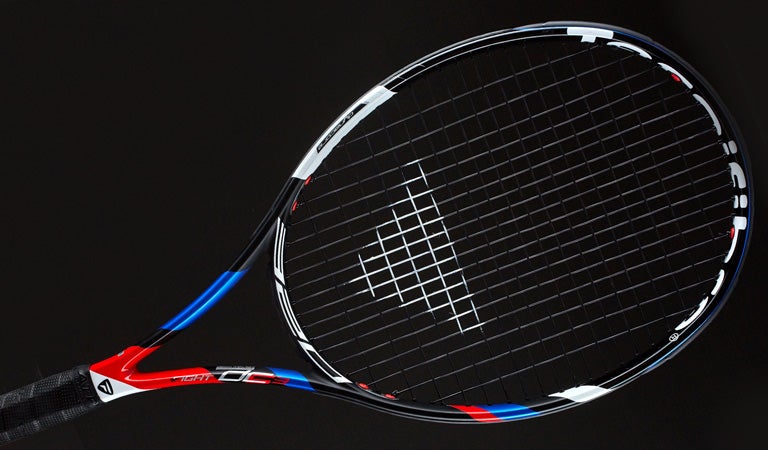
Upsides
- Plenty of power
- Lots of spin
Downsides
- Stiff feel
- Erratic response outside sweetspot
Summary
Powerful and spin friendly are the words that came to the minds of our playtesters when asked about the Tecnifibre TFight DC 320. This racquet provided a crisp, lively feel that made it easy for our playtesters to punch the ball back deep and play offensively. The TFight DC 320 offered a surprising level of spin potential, especially from the baseline, and our team enjoyed imparting loads of topspin on the ball when trading groundstrokes. However, the 18x19 string pattern seemed to make the sweetspot smaller, and the feel was unforgiving at times. Off-center contact would often result in "brassy" and uncomfortable feedback for our players. Furthermore, the stiff, crisp response left our testers feeling a bit disconnected from the tennis ball as it left the stringbed. This stiff and unresponsive feel seemed to be the sticking point that our testers couldn't quite get over in an otherwise powerful and easy to use modern player's racquet.
Tecnifibre TFight DC 320 Racquet Scores
| Power | 84 |
| Control | 74 |
| Maneuverability | 77 |
| Stability | 74 |
| Comfort | 64 |
| Touch/Feel | 66 |
| Serves | 72 |
| Groundstrokes | 78 |
| Returns | 78 |
| Slice | 76 |
| Topspin | 78 |
| Volleys | 75 |
| Overall | 75 |
Groundstrokes - Score: 78
Our playtesters thought the TFight DC 320 offered a bit more power and spin than control from the baseline, and it did so with a stiff, modern and sometimes unresponsive feel. It took Karly a bit of time to adjust to this racquet's power. She explained, "Given its denser string pattern, I was extremely surprised by how powerful the TFight DC 320 was. I needed some time to adjust to all the pace it produced, as it was easy to send shots flying. Luckily, the racquet also offered plenty of spin potential. I started relying on the exceptional spin, using tons of topspin to keep the ball from landing long. The biggest downside for me, however, wasn't the lack of control, but the stringbed's erratic response. The TFight DC 320 had a very small sweetspot, and the inconsistent feel made it very apparent when I didn't make contact in the middle of the strings. My shots were noticeably deader outside of the sweetspot, and the racquet jarred my hand on off-center shots."
Andy thought the access to power and spin was good, but he didn't find the racquet to be all that forgiving on off-center shots. He shared, "I thought the TFight DC 320 offered a bit more power than control from the baseline. I was rewarded for taking short, compact swings at the ball and letting the racquet generate a lot of the power for me. Spin potential was good, too, for a racquet with a 98 square inch head. Furthermore, the heft of the TFight DC 320 provided good stability at contact, although the feel was less than ideal on off-center hits. When I made contact outside the sweetspot the power dropped off pretty dramatically, and the feel was stiff and uncomfortable."
Michelle also liked using the easy power for her offensive game, but she didn't find a perfect fit. She critiqued, "This racquet felt brassy to me from the very first hit. It wasn't especially uncomfortable, but it wasn't a feel I enjoyed. Aside from that, I could get easy depth and power from the TFight DC 320. The sweetspot felt a little small and erratic, which affected my consistency. The racquet was easy to swing, and I could generate enough pace to put balls away. I could hit out and get lots of power, but I needed to go for bigger targets because I just didn't feel like I could confidently and consistently hit my spots."
Troy had better success, saying, "I was finding a good amount of control with this racquet from the baseline. When I was swinging away on my groundstrokes I was locating my targets consistently. Topspin wasn't the best attribute of this racquet, but I was able to generate ample spin to hit cross-court angles effectively. The dense 18x19 string pattern allowed for good control and depth on my backhand slice. A downside for me, though, was that the racquet felt stiff, and this feel took away from the responsiveness. Compared to my Wilson Blade 98 (18x20), the TFight DC 320 didn't have the same plush feel that I'm used to getting from my Wilson Blade 98 (18x20). Overall, the TFight DC 320 felt fast and whippy, although I would have preferred some added weight to increase the plow through and provide a plusher feel."
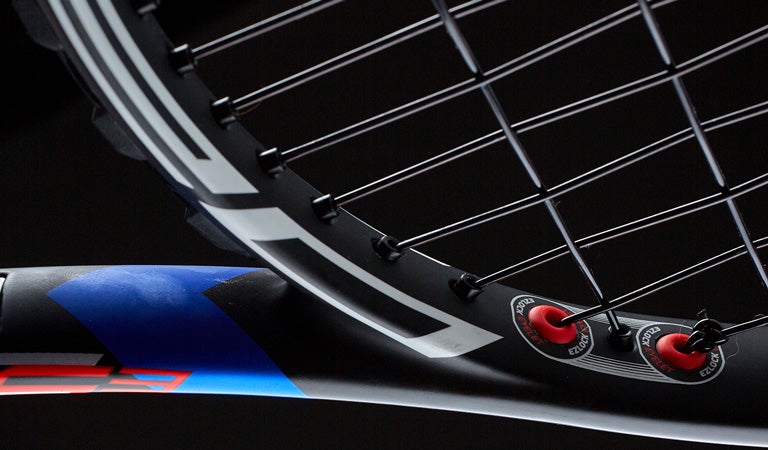
Volleys - Score: 75
Power and depth were, once again, easy to come by with the TFight DC 320 around the net, but our testers still didn't like the stiff and uncomfortable feedback. "I struggled a bit with this racquet up at net," Andy admitted. "I thought it lacked feel and was pretty unforgiving outside of the sweetspot. There was good power and easy depth when I made good contact, but I just never felt all that connected to the ball as it was leaving the strings. Finesse shots were more difficult because the soft touch just wasn't there. The TFight DC 320 just felt a bit too stiff around the net."
Having a similar experience was Karly, who shared, "I liked the TFight DC 320 for the easy pace it offered when it came to volleys. The ball launched off the stringbed with ample power, making it simple to put away volleys. The maneuverability at the net was also manageable, which gave the racquet more of a point-and-shoot type of feel -- all I needed to do was move the racquet into position to hit an aggressive volley. However, I noticed more of a drop in stability at the net than anywhere else on the court. Making contact outside of the sweetspot left the racquet fluttering in my hands. If I didn't hit my volley in the right spot the racquet made sure I felt it."
Troy thought the TFight DC 320 was easy to handle and could consistently help him hit his intended targets when volleying, but he also found it uncomfortable when he made contact outside the sweetspot. He said, "This racquet was easy to maneuver when coming to net. When shots were hit hard at me, or I was caught in a quick exchange, it was easy to get the TFight DC 320 into place to hit an effective volley. I found a good amount of control on my volleys, and I was able to place the ball near the lines effectively. The firm feel made it uncomfortable on contact, though. I found that when I made contact outside the sweetspot the feel was a bit harsh on my wrist. I prefer a plusher, more flexible racquet, so I wasn't quite getting the touch and feel from the TFight DC 320 that I like."
Michelle wasn't bothered as much by the stiffer feel of the TFight DC 320, and she found herself volleying fairly effectively throughout the playtest. She said, "Aside from the feel, volleys were pretty simple to hit. No real issues there. It was easy to point and shoot. I will admit that the TFight DC 320 didn't feel like the most maneuverable racquet at net, but it got the job done. I could be aggressive when I wanted to be and block balls back when needed."
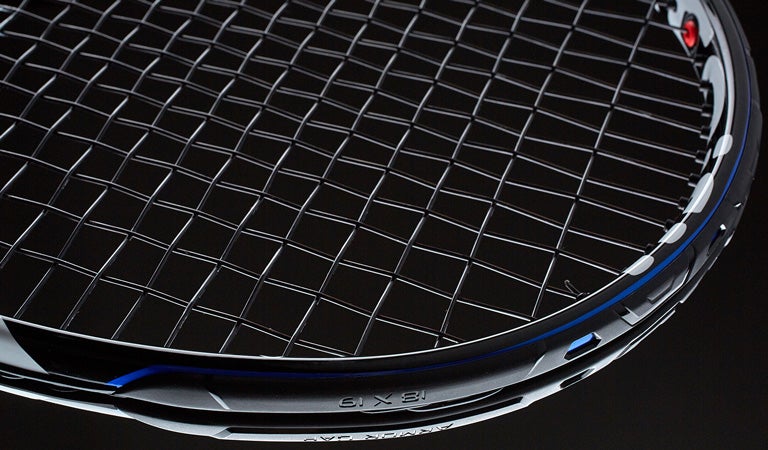
Serves - Score: 72
For the most part, our team struggled to harness the power of the TFight DC 320 on their serves. "This is one area where I really struggled," Michelle said. "It was tough for me to get any sort of consistency out of the racquet. I didn't feel comfortable going for first serves because I wasn't getting enough of them in, so I found myself relying heavily on slice and kick second serves."
Karly shared, "The TFight DC 320's powerful feel turned into a disadvantage on my serve. It generated so much power I felt like I had no control over where I was placing my serves. Aiming for targets was nearly impossible for me. Instead, I had to slow down my stroke and rely on spin to get the ball in. I was more comfortable with kick second serves because of the extra topspin, but I didn't have any confidence that I was going to hit my first serves in the service box."
Andy was able to use the TFight DC 320's explosiveness a bit more effectively than the other playtesters, but he still struggled with precision on his serves. He explained, "I was getting easy access to power and spin on my serves. It was easy to reach back and blast flat first serves up the T or get slice serves moving across the court. However, I did struggle controlling my serves and found myself aiming for bigger targets to eliminate risk. Most of the time this worked out fine in my service games, but I didn't feel like I could be quite as precise with my service locations as I would've liked."
Unlike the others, Troy was using the racquet's power and maneuverability to his advantage in his service games. He praised, "The combination of easy power and a fast feel helped me get some added pop on my first serve. My flat first serve down the middle came with ease. I found that I was getting a lot of power and didn't have to exert as much effort. The spin potential for my slice and kick serves was fairly average, but I was able to locate my targets within the service box with good consistency."
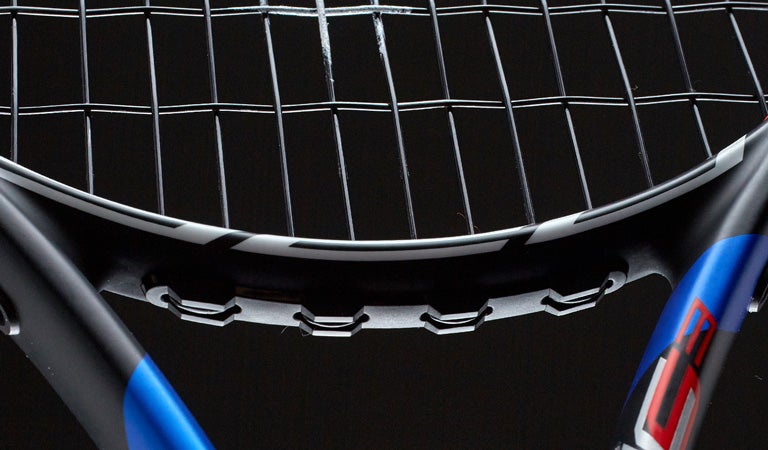
Returns - Score: 78
Pace and depth were easy to come by with the TFight 320 DC on our returns of serve, but directing the power proved to be an issue once again. "The power was what stood out the most to me," Karly reiterated. "Because I could generate so much pace on my returns, it was easy to quickly go on the offensive. I didn't have to put much effort into swinging big since the racquet produced plenty of power on its own. Instead, I had to put most of my efforts into making good contact and keeping the ball in play. If I didn't make good contact inside the sweetspot the response felt inconsistent and dead."
Andy had to adjust his returning strategy to find success on returns. He explained, "Like from the baseline, I found good results when I shortened up my swing and let the racquet do the work for me when returning serve. When I did that I got easy access to pace and depth and didn't have to worry about the lack of control as much. When I succumbed to temptation and went for a little bigger swing the racquet felt pretty unforgiving, and I had trouble controlling the ball."
Michelle also mixed up her tactics somewhat on returns. She noted, "Similar to my groundstroke experiences, I felt like I could attack returns, but I wasn't super confident with the response of the racquet. I had to pick bigger targets on my first serves, but I did enjoy teeing off on second serves. I found that I could rip some second serve returns with success."
Like from other areas of the court, Troy continued to enjoy the easy power and maneuverability of the TFight DC 320, but he struggled with the stiff, sometimes brassy feel. He said, "I was surprised by the amount of power I was getting on my returns. The racquet's maneuverability helped me get some added racquet head speed on my compact swings. I was also impressed with the level of stability it provided against big serves. I wasn't feeling any twisting in my hand when returning heavy serves. My only knock in this category was that the stiff response didn't provide a smooth feel on contact."
Overall - Score: 75
| Technical Specifications | ||
|---|---|---|
| Length | 27 in | 69 cm |
| Head Size | 98 sq in | 632 sq cm |
| Weight | 11.9 oz | 337 gm |
| Balance Point | 12.62 in 32 cm | 7pts Head Light |
| Construction | 22.5mm Straight Beam | |
| Composition | Graphite / Dynacore | |
| String Pattern | 18 Mains / 19 Crosses | |
| Babolat RDC Ratings | ||
|---|---|---|
| Score | Grade | |
| Flex Rating | 68 | Range: 0-100 |
| Swing Weight | 326 | Range: 200-400 |
| Andy's Scores | |||
|---|---|---|---|
| Power | 8.5 | Serves | 7.5 |
| Control | 7 | Groundstrokes | 7.5 |
| Maneuverability | 7 | Returns | 7 |
| Stability | 7 | Slice | 7 |
| Comfort | 4 | Topspin | 8 |
| Touch/Feel | 5 | Volleys | 7 |
| Overall | 7 | ||
| Michelle's Scores | |||
|---|---|---|---|
| Power | 8 | Serves | 6 |
| Control | 7.5 | Groundstrokes | 7.7 |
| Maneuverability | 7.8 | Returns | 8 |
| Stability | 7.8 | Slice | 7.8 |
| Comfort | 7.5 | Topspin | 8 |
| Touch/Feel | 7 | Volleys | 8 |
| Overall | 7.5 | ||
| Karly's Scores | |||
|---|---|---|---|
| Power | 8.4 | Serves | 7.4 |
| Control | 7.2 | Groundstrokes | 7.9 |
| Maneuverability | 7.9 | Returns | 8.2 |
| Stability | 7 | Slice | 8 |
| Comfort | 7.1 | Topspin | 8.2 |
| Touch/Feel | 7.5 | Volleys | 7.8 |
| Overall | 7.8 | ||
| Troy's Scores | |||
|---|---|---|---|
| Power | 8.5 | Serves | 7.8 |
| Control | 8 | Groundstrokes | 8 |
| Maneuverability | 8.2 | Returns | 7.9 |
| Stability | 7.7 | Slice | 7.5 |
| Comfort | 6.9 | Topspin | 7.1 |
| Touch/Feel | 7 | Volleys | 7 |
| Overall | 7.6 | ||
Playtester Profiles
Andy: Open level all court player with a semi-western forehand grip and a two-handed backhand. Andy currently using a Yonex EZONE DR 98.
Michelle: Open level baseline player with a semi-western forehand and a two handed backhand. She currently plays with the Wilson Pro Staff RF 97 Autograph.
Karly: 4.0 baseline player currently playing with the Prince Textreme Tour 95. She hits with a semi-western forehand grip and uses a two handed backhand.
Troy: 5.0 lefty all-court player with a full Western Forehand and a two-handed backhand. Troy currently plays with a Wilson Blade 98 18x20.






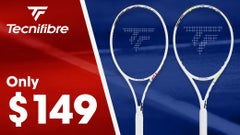


Likes
Andy - "Easy power and spin compared to other similar racquets."
Michelle - "The paint job looks great, and I was able to generate good pace and depth. Probably liked it best on returns."
Karly - "The easy power and access to spin."
Troy - "The TFight DC 320 provided a good amount of power and nice maneuverability compared to other similar racquets."
Dislikes
Andy - "Stiff and uncomfortable feel, especially on off-center contact. I also thought the TFight DC 320 lacked a bit of control."
Michelle - "I didn't like the feel of the racquet, and I had some serious serve issues."
Karly - "The inconsistent feel across the stringbed -- the response felt significantly less powerful outside the small sweetspot."
Troy - "I didn't find the 'scalpel-like' precision that I crave in a racquet."
Comparing the racquet to others they've tried, our testers said:
Andy - "The feel of the TFight DC 320 reminded me quite a bit of previous Tecnifibre TFight racquets - stiff and crisp with good pop, but lacking a bit in comfort and feel. The 320g unstrung weight has a nice heftiness to it and gives it good stability compared to a Wilson Blade 98 or Yonex EZONE DR 98. However, that weight also means it's a little less maneuverable."
Michelle - "The TFight DC 320 reminded me a bit of the Dunlop Force 100 Tour -- not the nicest feel for me but it still gets the job done."
Karly - "The TFight DC 320 reminds me of a more powerful version of the Wilson Burn FST 95. I think both have similar feel and weights, but the Wilson offers more control and the Tecnifibre makes it easier to generate pace."
Troy - "I found some similarities to the Tecnifibre TFight 325 VO2 Max, but the TFight DC 320 has a more powerful response. This racquet also reminded me of the Pacific X Force Pro No. 1, but the TFight DC 320 has a stiffer feel."